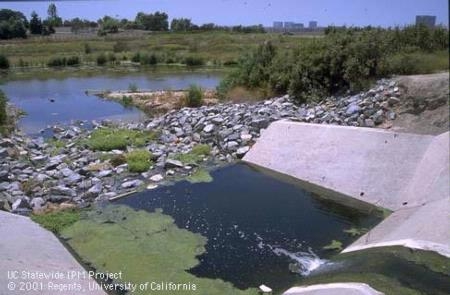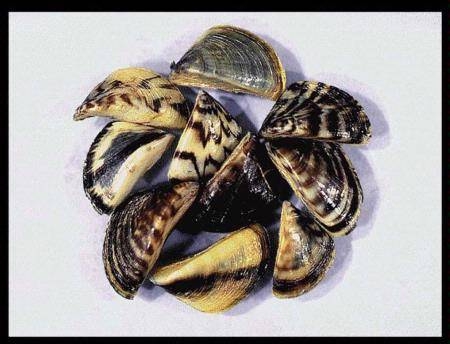
Posts Tagged: Sabrina Drill
English as a 2nd Language watershed education curriculum
Designed to introduce new U.S. residents and other English as a Second Language (ESL) students to the natural environment in central Los Angeles and to foster environmental stewardship, UC’s Water: An English as a Second Language Curriculum for Adults is a wonderful resource to meet these goals.
The curriculum focuses on issues that are relevant to many recent immigrants living in arid, urban situations. It can be used in conjunction with the Teacher’s Edition.
From the author, UC Cooperative Extension Natural Resource Advisor Sabrina Drill:
In 2004, University of California Cooperative Extension, with support from the Rivers and Mountains Conservancy and in collaboration with the English as a Second Language faculty and students at East Los Angeles College, began to develop a curriculum for English language acquisition based on local environmental issues. The driving principle behind this was that awareness, understanding, and stewardship of one’s environment was an important element of membership in a community, and that this understanding would improve both our environment and our communities. Immigrants to the United States should be aware that they have the right to a clean, healthy environment, that there are avenues they can take individually to influence the quality of their environment, and that the decisions made by communities and governments affect that environment…
…When first embarking on this project, we choose to follow the mainstream ESL education community in embracing the concept of English immersion. Hence, all materials are provided in English and can be used in a classroom where a wide diversity of national origins are represented…

Making your property fire-safe
Did you know your local UCCE office is a great place to get fire-safe information? Natural Resources Advisor, Sabrina Drill has done much work to make this knowledge easily available for you.
Two free publications that provide great tips and ideas on how to make your property fire safe are: Making your property fire safe and S.A.F.E. landscapes in the wildland- urban interface.
Other great fire-safe information can be found on our website by clicking the “fire information” button on our home page, or by clicking here.

Santa Clara River Watershed Times
Sabrina Drill, our Natural Resources Advisor has recently added a new newsletter to our website.
As always, Sabrina’s publications are brimming with a wide variety of information and fantastic photographs – along with ways to get involved. Learn about our local history and habitats and what you can do to help protect them. There are many great places nearby to enjoy our natural resources at little to no charge.
In addition to the Santa Clara River Watershed Times, our office produces several other newsletters that may be of interest to you or someone you know.
Sustainable And Fire-Safe Landscapes
Ventura County UCCE shares hard-working Natural Resources Advisor, Sabrina Drill with Los Angeles County. She has many projects to which she devotes much time . One of them is SAFE (Sustainable And Fire-SafE) Landscapes. This program has Sabrina working and collaborating with a wide base of people and groups throughout our state.
From this collaboration an enormous wealth of knowledge is available at http://groups.ucanr.org/SAFE/index.cfm, or by clicking on the Fire Information button on our home page. At the site you will find many ways to help reduce the possibility of fire damage or destruction to your home and much more.
Many of the suggestions offer other positive outcomes. One such example is using native plants. These plants are not only resistant to fire, but they also take less water, and grow slower. By planting these species around your home, you are reducing the threat of fire, saving water, and time spent on yard maintenance. Suggestions on steps to take throughout the year are broken down by season, helping to reduce the where, what and when panic that often accompanies large projects around the home.
Wildfires are always a danger in Southern California, and anytime is a good time to get started educating yourself and your family on steps to take to minimize the threat of damage and increase safety. Our website is a great place to start.
Monitoring waterways for invasive quagga and zebra mussels
The University of California’s Early Detection Monitoring Manual for Quagga and Zebra Mussels publication defines aquatic invasive species (AIS) as ”non-native aquatic organisms that have caused, or likely will cause economic or ecological harm or impacts to human health (pg 1).”
Written by Ventura County UCCE’s Carolynn Culver and Monique Myers and Los Angeles County UCCE’s Sabrina Drill and Valerie Borel, this publication gives great background information while providing clear guidelines and instructions for monitoring small lakes, reservoirs and streams in California and is designed especially for citizen volunteer and monitoring groups. We hope that early detection of these species in California’s waterways will reduce their negative impacts. From the manual:
The sooner a population is detected, the more time there will be to take action and the higher the likelihood of successful eradication. Responding to an infestation at an early stage is also referred to as rapid response. Rapid response plans for AIS in general, and quagga/zebra mussels in particular, are being developed and updated in California (pg 1).”
For more information about these invasive species, check out the California Department of Fish and Game website at http://www.dfg.ca.gov/invasives/quaggamussel/. Anyone interested in monitoring a water body is encouraged to contact your local Fish and Game authorities to coordinate efforts.
The Early Detection Monitoring Manual for Quagga and Zebra Mussels is available for viewing in the Ventura UCCE office (please call first to make sure) and for purchase online at http://anrcatalog.ucdavis.edu/. Use promo code PRVEN56 at checkout to receive a 10% discount. For orders of five or more, please contact our office for bulk discount rates.

